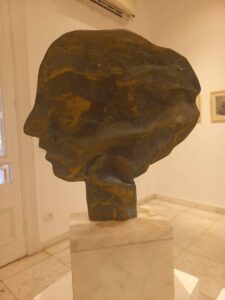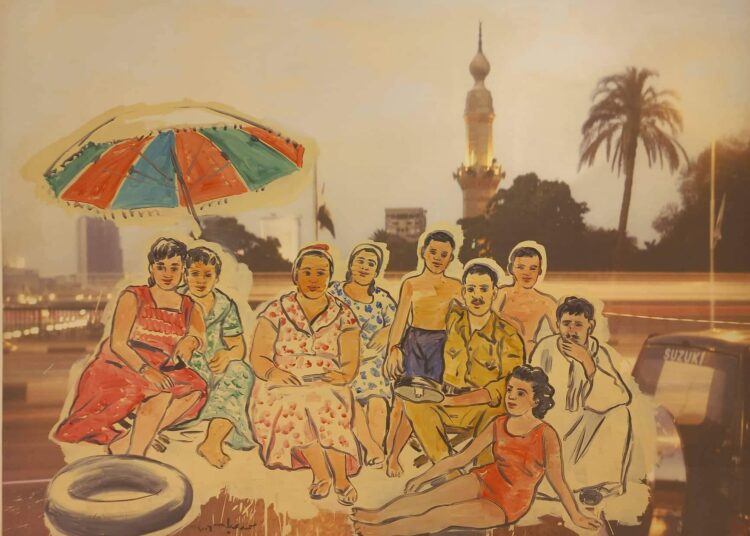Artist Mohamed Abla has been enriching the local art scene for over five decades now.
He is now an icon of Egyptian and Arab plastic art.
Abla held his latest retrospective exhibition at Dai Gallery in the Nile island of Zamalik in Cairo. He gave it the indicative name, ‘Stages’.
The exhibition brought together 200 of the artist’s works that embody various stages in his artistic evolution since his beginning in the 1970s.
The same works ranged between drawing, photography, sculpture, composite pieces and videos.

Abla takes his art very seriously. He makes intense preparations for every new experience. The preparations usually include reading, travelling, wandering through the markets, and visiting dozens of shops, in search of unique materials to use.
Stages came in the wake of Abla’s winning of the Goethe Medal for Arts and Creativity.
The German government usually offers this medal to outstanding people around the world, in recognition of their contributions in their respective fields.
Abla is the third Arab to receive this medal. Syrian poet, Adonis, and Egyptian philosophy professor and critic, Abdel Ghaffar Makkawi, were granted the medal before him.
The medal came especially in recognition of the diversity of Abla’s work and his ability to use this work to give insights into his culture and society.
Abla’s works are steeped in the local Egyptian environment, especially the islands of the River Nile, childhood memories, and folklore.
He says his upbringing played a major role in forming his artistic vision.
“I have rural and Bedouin origins in my blood,” he told the Egyptian Mail in an interview.
These origins put Abla in continual search for rich environments, nature, and the rich human spirit.
He said he considers art a type of commitment.
“For me, it is a commitment to society and its political, economic and social issues, not just a purely aesthetic product,” Abla said of art.
Abla hunts for a creativity spark all the time. He hunts for this spark in the faces of people, sitting at coffee shops across Egypt, in popular markets and in the fields on the outskirts of Giza Governorate.
He only paints what provokes his imaginative faculties and directly stirs the artist in him.
Abla considers the Caricature Museum he founded in Tunis Village, near Fayoum, one of his most important achievements.
Caricature, he said, is his old love.
“The museum was Egypt’s caricature pioneers’ dream finally coming true,” Abla said.
He referred to pioneers, such as Zuhdi al-Adawi.
Abla promised al-Adawi that he would not rest before he fulfills his personal dream of establishing a museum for caricature.
Sorry to say, the dream was fulfilled when al-Adawi was gone.
Al-Adawi, who helped found the Caricature Society in 1984 and became the head of the Cartoonists Association, passed away on July 20, 1994, leaving behind a generation of disciples who remain committed to his art style.
Abla was a close friend of al-Adawi. He sticks out as a non-conformist when it comes to plastic art.
He does not live in an ivory tower like most contemporary artists do.
Abla can be found everywhere: Among farmers protesting to demand their rights or standing in front of a board, teaching art to village children.
“I cannot be an artist without being the voice of people,” Abla said. “I have to reflect the heartbeats of their reality, their sweet moments and bitter ones.”






Discussion about this post